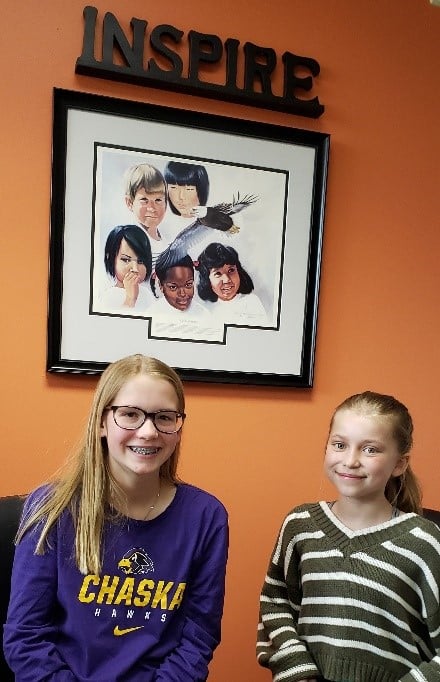Strategies for Building Student Ownership of Their Learning
CompetencyWorks Blog
This is the fifth post in a series about the Eastern Carver County Public Schools in Minnesota. Links to the other posts are provided at the end of this article.
 Competency-based education can lead to some interesting conversations. One exchange that stuck in my head after a recent visit to Pioneer Ridge Middle School was:
Competency-based education can lead to some interesting conversations. One exchange that stuck in my head after a recent visit to Pioneer Ridge Middle School was:
Student: “Can I go to the bathroom?”
Teacher: “Is that what’s best for your learning?”
A teacher shared that exchange as an example of how his team relentlessly seeks to build student ownership of their learning. The teacher’s message is “If you need to go, then definitely go.” But he also likes to convey, “Let’s be honest with each other. Are you really just asking because you need a break? Because if what you need is a quick walk or some type of support to help you refocus on your learning, that’s fine too.” (Yes, this gets personal, but teachers know the out-sized role bathroom discussions can take on.)
So many conversations at Pioneer Ridge were about having a task become collaborative between teacher and student, rather than a compliance exercise in which students were just following orders. The goal was for students to learn about themselves as learners, while they’re still in K-12 education with a safety net. For the student mentioned above, maybe they start out taking some kind of quick break every 20 minutes. Maybe over time it becomes every 30 or 60 minutes. But their agency, self-knowledge, and self-direction are the fundamental issues.
One teacher told me about a student who was in tears because he hadn’t met his learning targets by the end of the school year. The student was able to see and acknowledge that he didn’t use his time wisely. The teacher told me, “I thought to myself, ‘Wow, I didn’t learn that until my freshman year of college, when I was wasting a $40,000 tuition!’ So sometimes students are off task, but it’s such a different conversation, where we’re helping them identify behaviors that are best for their learning.”
 Many aspects of the personalized learning approaches in the Eastern Carver schools call for student ownership and self-direction while also building these qualities, in a virtuous upward cycle. As described in recent posts, students at the Integrated Arts Academy develop intensive projects related to their interests, and students at Pioneer Ridge Middle School learn to allocate their own learning time based on transparent information about their progress in different courses. An 8th-grader at Pioneer Ridge told me, “If you’re ahead and you’re done with stuff in one class, then you can really focus on the class that maybe you’re not doing as well in, and keeping hitting those seminars and focus flexes and coaching workshops to spend time with the teacher and really understand the topic you’re working on.”
Many aspects of the personalized learning approaches in the Eastern Carver schools call for student ownership and self-direction while also building these qualities, in a virtuous upward cycle. As described in recent posts, students at the Integrated Arts Academy develop intensive projects related to their interests, and students at Pioneer Ridge Middle School learn to allocate their own learning time based on transparent information about their progress in different courses. An 8th-grader at Pioneer Ridge told me, “If you’re ahead and you’re done with stuff in one class, then you can really focus on the class that maybe you’re not doing as well in, and keeping hitting those seminars and focus flexes and coaching workshops to spend time with the teacher and really understand the topic you’re working on.”
Pioneer Ridge Principal Dana Miller described seeing a group of students engaged in what was clearly a coaching workshop, but there was no teacher present. She realized that a student, not a teacher, was leading the workshop. The student had mastered the material and was passionate about the topic, so she offered to coach her fellow students. Perhaps this suggests another dimension of ownership—taking responsibility for other students’ learning. But teaching a topic often solidifies the knowledge for the teacher, so the student coach was likely well-served too. Miller pointed out that part of what facilitated the student-led coaching was that “The roadmap of our standards and learning targets is so clear. It wasn’t a secret anymore what we wanted them to know.”
Assessment at Pioneer Ridge also provides opportunities for students to build ownership and agency. For many learning standards and learning targets, students have multiple options for how to demonstrate evidence of mastery, and they are encouraged to propose alternatives that they find interesting and motivating. These assessments can be a test, a video, a performance, a conversation with a teacher, a project, and more. Often students are also asked to reflect verbally or in writing about how well they feel they have mastered a particular learning target.
A Pioneer Ridge teacher said, “All of this flexibility has been huge for students to reflect on ‘Where am I, and what do I need to be doing? Where do I need feedback?” In short, it has been huge for building ownership of their learning.
Other Posts in This Series
- District-wide Transformation to Personalized Learning in Eastern Carver County, Minnesota
- Personalizing Learning in an Alternative Arts High School
- It Takes a Village to Personalize Learning to Every Student
- Flexible Scheduling, Supports, and Monitoring in a Competency-Based Middle School
- Eastern Carver’s Framework for Lifelong Learning Skills
Learn More
- Three Tools to Engage Ownership in Your Classroom
- Ten Tips for Developing Student Agency
- WestEd’s Student Agency in Assessment & Learning Project
Eliot Levine is the Aurora Institute’s Research Director and leads CompetencyWorks.